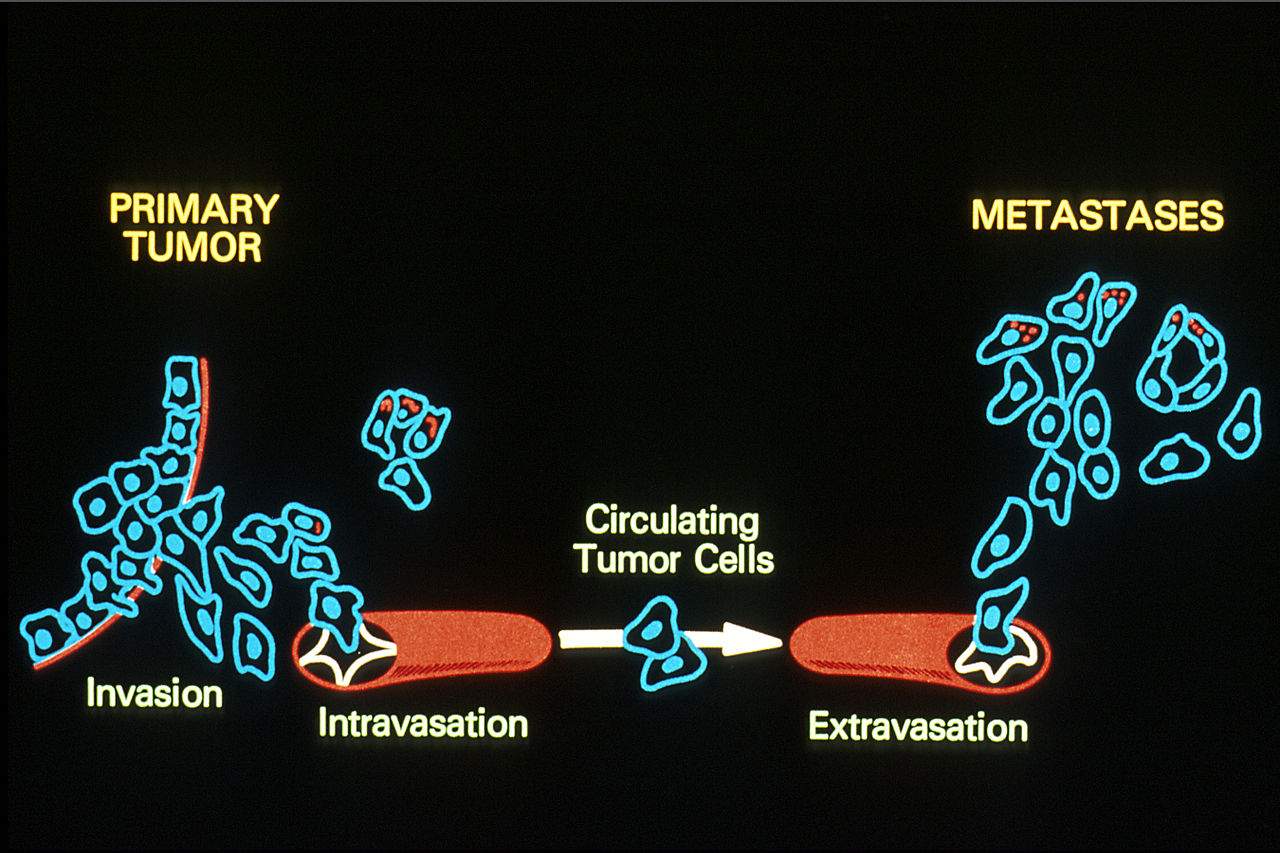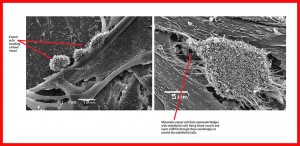Metastatic Nanobridges to Take Control of Healthy Cells

Researchers from Brigham and Women’s Hospital (BWM) have discovered a new mechanism used by cancer cells to metastasize. Nanochannels protruding from metastatic cells connect them with healthy cells and allow cancer cells to inject microRNAs that alter the normal cells´ behavior. The study has been published in the journal Nature Communications.
Metastasis is the migration of cancer cells from the site of origin other parts of the body, and it accounts for 90% of cancer-related deaths. The mechanisms of metastasis are still relatively unknown. Dr. Shiladitya Sengupta and his team have been studying metastasis for the past five years, and their research points to intercellular communication as a key element in cancer progression.
Nanobridges to deliver microRNA and hijack healthy cells
In their last study, the team constructed a 3D tumor matrix with healthy endothelial cells and metastatic breast cancer cells. Instead of clumping together, cancer cells spread along the blood vessels. Scanning electron microscopy revealed nanotubes protruding from the cancer cells into endothelial cells. Later experiments revealed that the genome expression profile of endothelial cells had changed. Suspecting that this was caused by microRNAs delivered by the cancer cells over the nanobridges, the scientists checked the endothelial cells and found two microRNAs previously linked to metastasis.
Dr. Sengupta and his team tried the several compounds in the tumor model and in mice to see if they disrupted nanobridges formation. Some pharmacological agents, like docetaxel -already used to treat metastatic breast cancer- prevented the formation of nanoconduits, both in vitro and in vivo. The researchers plan to test also the effects of ATPases.
Metastatic nanoscale bridges represent the most recent therapeutic opportunity for cancer and metastasis treatment. Metastatic hijacking can be pharmacologically prevented, and the researchers at BWM will continue looking for treatments that aim at the nanobridges.
Source: Harvard gazette

